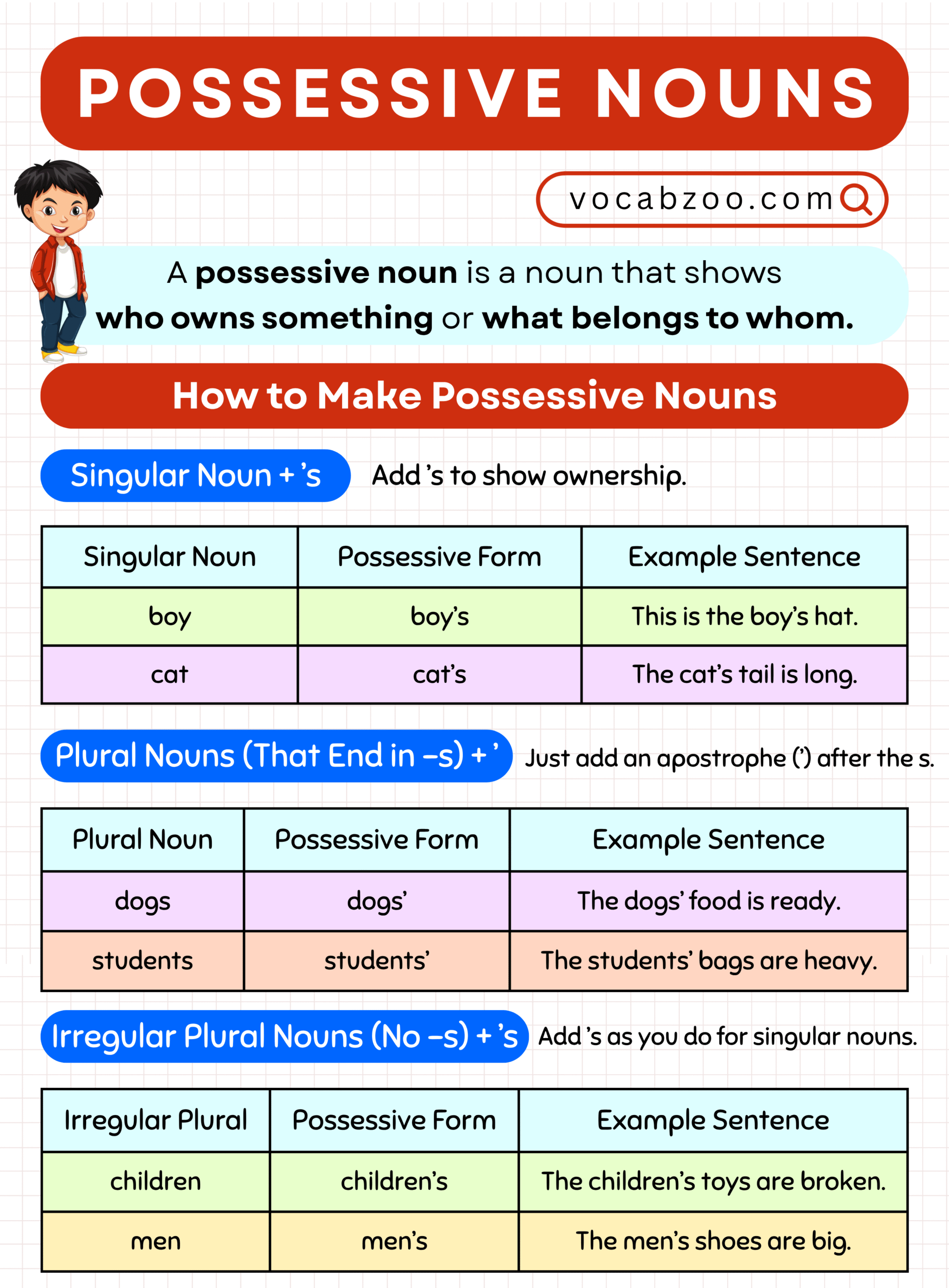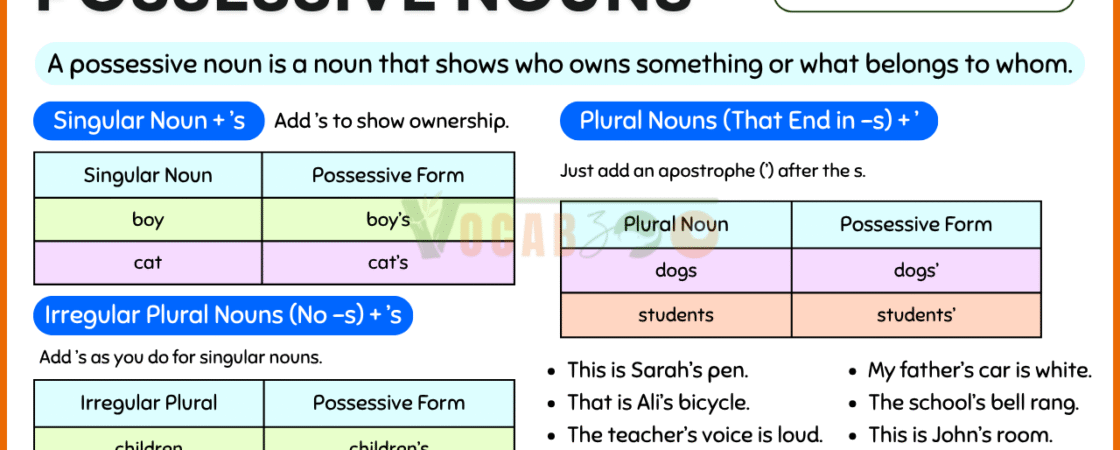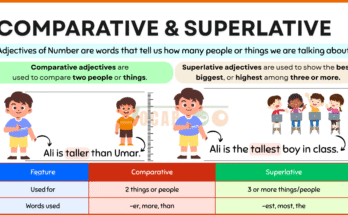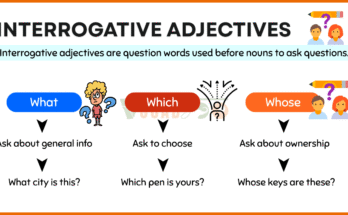Possessive nouns show that something belongs to someone or something. They help us talk about ownership in a clear and simple way. In this blog post, you will learn how to make possessive nouns using apostrophes, when to use them, and how they work in sentences. This will help you write and speak more correctly in English.
What is a Possessive Noun?
A possessive noun is a noun that shows who owns something or what belongs to whom.
It answers the question: Whose is it?
Example:
-
This is Ali’s book.
(Whose book? — Ali’s book)
How to Make Possessive Nouns
Here’s how to form possessive nouns:
Singular Noun + ’s
Add ’s to show ownership.
| Singular Noun | Possessive Form | Example Sentence |
|---|---|---|
| boy | boy’s | This is the boy’s hat. |
| cat | cat’s | The cat’s tail is long. |
| teacher | teacher’s | I saw the teacher’s car. |
Plural Nouns (That End in -s) + ’
Just add an apostrophe (’) after the s.
| Plural Noun | Possessive Form | Example Sentence |
|---|---|---|
| dogs | dogs’ | The dogs’ food is ready. |
| students | students’ | The students’ bags are heavy. |
| parents | parents’ | My parents’ room is upstairs. |
Read More: Regular and Irregular Plural
Irregular Plural Nouns (No -s) + ’s
Add ’s as you do for singular nouns.
| Irregular Plural | Possessive Form | Example Sentence |
|---|---|---|
| children | children’s | The children’s toys are broken. |
| men | men’s | The men’s shoes are big. |
| women | women’s | The women’s room is locked. |

Why Use Possessive Nouns?
We use possessive nouns to:
- Talk about ownership
Sara’s phone, my friend’s bag - Talk about relationships
Ali’s brother, teacher’s students - Talk about parts of something
car’s engine, dog’s tail
Sentences with Possessive Nouns
- This is Sarah’s pen.
- That is Ali’s bicycle.
- The teacher’s voice is loud.
- I like the dog’s collar.
- We cleaned the room’s floor.
- This is my friend’s notebook.
- The boy’s shoes are new.
- I took the girl’s book.
- The bird’s nest is on the tree.
- Look at the baby’s toy.
- The children’s bags are colorful.
- My father’s car is white.
- The school’s bell rang.
- This is John’s room.
- The cat’s eyes are green.
- That is the bus’s tire.
- The player’s jersey is blue.
- The mother’s love is pure.
- My brother’s bike is fast.
- The man’s wallet is on the table.
- The women’s meeting is tomorrow.
- My uncle’s farm is big.
- The students’ results are out.
- The dog’s bone is under the table.
- I like the artist’s paintings.
- The engineer’s tools are heavy.
- The child’s shoes are cute.
- The car’s mirror is broken.
- My aunt’s bag is blue.
- The doctor’s advice was helpful.
Common Mistakes to Avoid
| Mistake | Correction |
|---|---|
| The girls bag is pink. | The girl’s bag is pink. |
| The boys toys are missing. | The boys’ toys are missing. |
| The childrens game is fun. | The children’s game is fun. |
Mini Quiz: Test Your Understanding
Choose the correct possessive form:
- That is (Ali / Ali’s) car.
- The (dogs / dogs’) tails are wagging.
- I saw the (child / child’s) drawing.
- The (women / women’s) clothes are nice.
- This is my (friend / friend’s) pencil.
Answers:
- Ali’s
- dogs’
- child’s
- women’s
- friend’s
FAQs: Possessive Nouns
1. What is a possessive noun?
A possessive noun shows who owns something. It usually has an apostrophe (‘).
2. How do I form a possessive noun?
-
Add ’s to singular nouns.
-
Add only ’ to plural nouns ending in s.
-
Add ’s to irregular plurals.
3. Can I use “of” instead of possessive nouns?
Yes! Sometimes you can say:
-
The leg of the chair = The chair’s leg
Practice writing sentences with possessive nouns every day. It will help you speak more clearly and correctly in English. Start with people you know or things you see around you.
Read More



